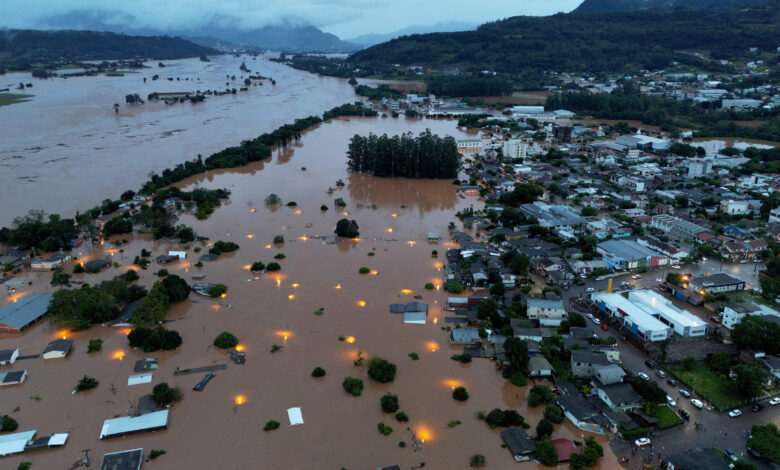Unprecedented floods cause devastation and paralyze Brazil
El Niño, a climatic phenomena, has been linked to Rio Grande do Sul's excessive rains

The devastating flooding in the southern state of Rio Grande do Sul has brought the region to a complete stop, prompting officials to refer to it as Brazil’s “worst natural calamity.” Over a hundred deaths have been attributed to the continuous rain, displacing 163,000 people and injuring 270 more. With 128 people still unaccounted for and neighbors close to the Patos lagoon being advised to leave immediately owing to increasing floodwaters, the calamity has left a path of devastation in its wake.
Last month, days of relentless rain caused rivers to overflow and flood entire neighborhoods, starting a disaster. Following flooding, Porto Alegre’s main airport, a vital hub for the area, was forced to close. Due to the remaining flooded roads and highways, the state’s connectivity to the rest of the nation has been lost.
Around 80 percent of people in Porto Alegre, the state capital, lack access to flowing water, posing a serious situation. The city is in desperate need of safe drinking water because its water treatment facilities have closed. To assist the impacted areas, the Brazilian Navy has sent its largest ship, the “Atlantic,” along with mobile water treatment systems.
With over 100,000 homes destroyed or severely damaged and damages estimated at over $900 million, the economic impact is tremendous. Historic levels have been reached in the Guaiba River, which flows through Porto Alegre, and the possibility of dam breaches is imminent. With his unwavering commitment, President Luiz Inacio Lula da Silva has made sure that “no lack of resources” will hinder the recovery operations.
The nation’s people are resilient despite the chaos as they deal with this calamity; thousands of troops, police, firefighters, and volunteers are working nonstop to rescue individuals who are trapped and provide vital relief. The world is watching as Brazil faces one of the most difficult times in its history, and the situation is still dire.
El Niño, a climatic phenomena, has been linked to Rio Grande do Sul, Brazil’s excessive rains. This is an unforeseen event that warms the Equatorial Pacific region’s surface waters and has a big impact on South America’s weather patterns. Rio Grande do Sul’s severe floods were triggered by El Niño, which typically causes droughts in the north and intense rains in the south of the country. In addition, MetSul, a meteorological organization, had released a warning regarding the possibility of severe weather in several areas of Rio Grande do Sul due to a cold front that would bring heavy rain, gales, and hail.



